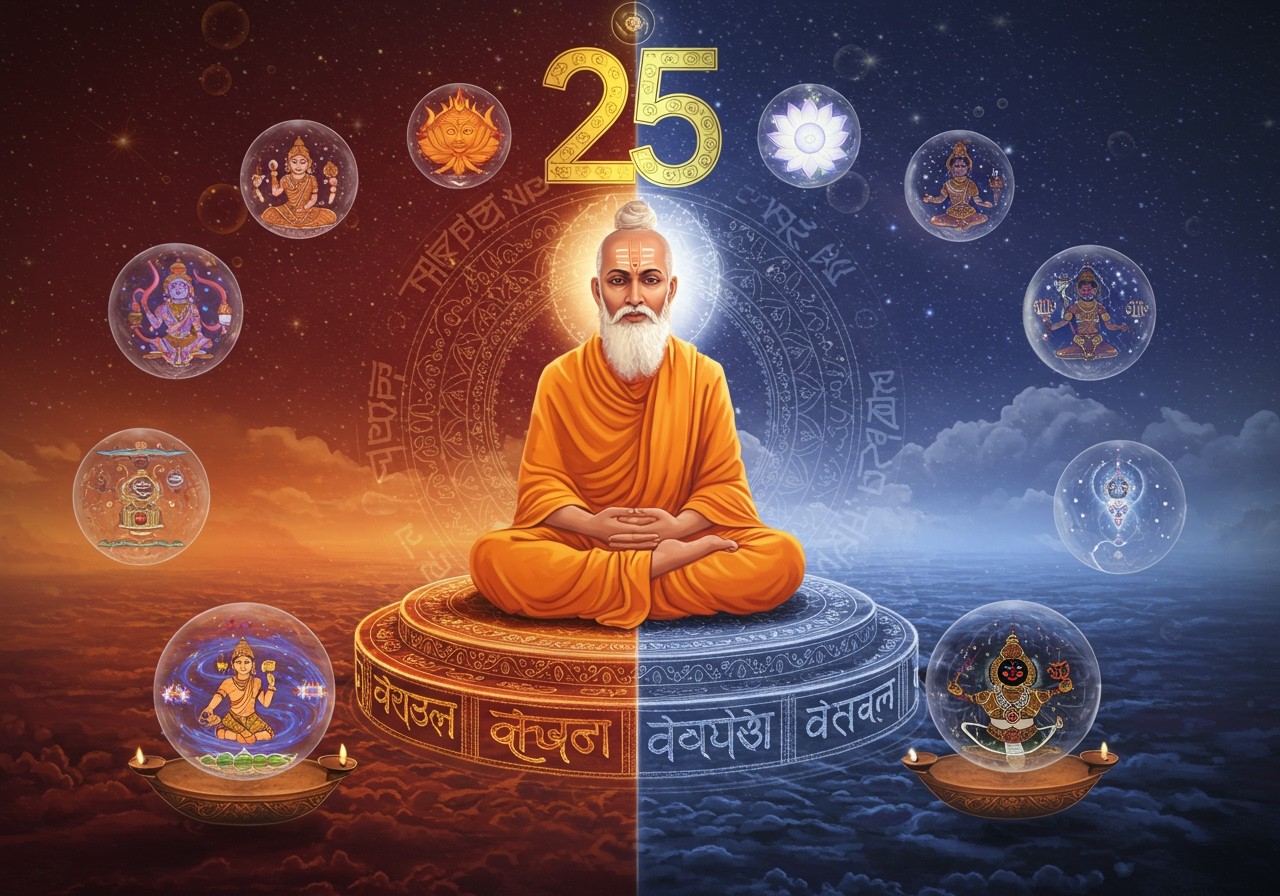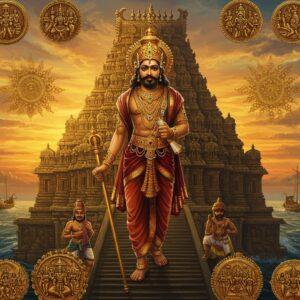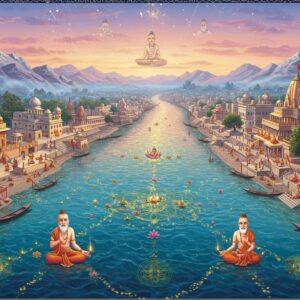
Samkhya Darshan, often referred to as Sankhya, is a dualistic school of Hindu philosophy. It presents a unique perspective on reality, distinguishing between consciousness (Puruṣa) and matter (Prakṛti). This ancient wisdom has profoundly influenced numerous Indian philosophical systems and spiritual practices.
Delve deeper into related concepts with our articles on Hindu Philosophy and Hindu Symbols.
Historical Context and Evolution
Sage Kapila is traditionally recognized as the founder of Samkhya. The Samkhyakarika, attributed to Ishvarakrsna (c. 3rd century CE), stands as a key text, articulating core Samkhya principles. It’s regarded as one of the oldest orthodox philosophical systems in Hindu thought.. Samkhya’s influence is evident in other systems, including Yoga and Vedanta, showcasing its significance in the development of Hindu thought.
Key Concepts of Samkhya
Central to Samkhya are Puruṣa (pure consciousness) and Prakṛti (the material world). Puruṣa is eternal, unchanging, and the source of awareness. Prakṛti, composed of the three gunas – sattva (goodness, light), rajas (passion, activity), and tamas (inertia, darkness) – is dynamic and ever-evolving.
- Prakriti evolves into twenty-four tattvas (principles), driven by the interplay of the gunas. This evolution explains the manifestation of the material universe from a primordial state. Understanding this interplay is crucial to grasping Samkhya’s cosmological view.
- Samkhya recognizes multiple Purushas. Each individual possesses a unique Purusha, which is unaffected by the changes in Prakriti. This concept distinguishes Samkhya from monistic schools of thought, which posit a single universal consciousness.
Philosophical Principles
Samkhya emphasizes the concept of causation (Sat-kārya-vāda), which states that the effect pre-exists in the cause. Liberation (moksha) is achieved through the realization of the distinction between Puruṣa and Prakṛti. By recognizing that the self (Puruṣa) is distinct from the material world (Prakriti), one attains freedom from suffering.
- Moksha, the ultimate goal, is the liberation from suffering caused by the misidentification of Purusha with Prakriti. This liberation comes through discriminating knowledge (viveka), allowing Purusha to stand apart from Prakriti’s influence.
- Samkhya identifies three valid sources of knowledge (pramāṇas): perception, inference, and valid testimony. These are the tools through which we gain accurate knowledge of reality, ultimately facilitating the discernment necessary for liberation.
Samkhya and Yoga
Samkhya and Yoga are often considered sister traditions. Yoga draws heavily upon Samkhya’s metaphysics, utilizing its framework to explain the nature of reality and consciousness. While Yoga incorporates practices like meditation and breath control, Samkhya focuses primarily on philosophical understanding as the path to liberation.
Explore more about Dharma and Karma and Hinduism’s Global Reach.
Samkhya’s Relevance Today
Samkhya’s insights into consciousness and the nature of reality continue to resonate in modern philosophical discussions. Its emphasis on self-realization and liberation from suffering provides a timeless framework for personal growth. Its principles have found their way into various modern wellness practices, bridging ancient wisdom with contemporary needs.
Exploring Samkhya Further
For those seeking to delve deeper, the Samkhyakarika and its commentaries offer valuable insights. Numerous resources, including translations and interpretations, are available online and in print, providing a rich foundation for understanding this ancient philosophical tradition.
Poojn.in: Supporting Your Spiritual Journey
Poojn.in offers a wide selection of products to support your exploration of Samkhya Darshan and other spiritual traditions. From sacred texts and meditation accessories to ritual items and educational resources, we provide everything you need to deepen your practice.
- Explore our collection of sacred texts, including the Bhagavad Gita, a text deeply influenced by Samkhya philosophy.
- Enhance your meditation practice with our range of meditation supplies, creating a serene environment for contemplation.
- Discover ritual items to enhance your spiritual practice and create a sacred space for study and reflection.
- For those interested in exploring the divine representation of consciousness, browse our selection of murtis, including depictions of deities like Shiva and Adiyogi.
Visit www.poojn.in today to discover a world of cultural and spiritual products.


